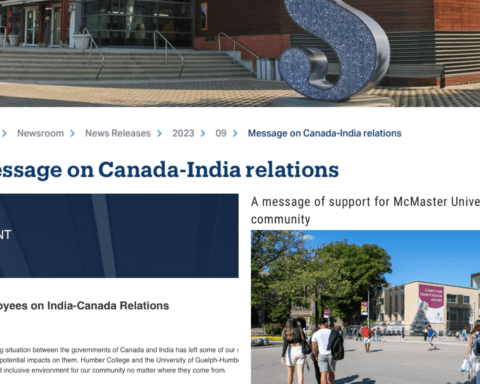Microaggressions are those subtle slights that occur daily for so many people from diverse communities, backgrounds, and identities. The slights can be so subtle that they are hard to identify or “prove”. Yet the affected people know they exist because of how these microaggressions make them feel. Microaggressions make people feel as if their identity is not welcome by others and that they are “outsiders” in the workplace and in Canadian society. Although these acts are not as noticeable to others in the same way that blatant “in your face” discrimination is, their cumulative effect can often be just as damaging to the target, and arguably more damaging.
Exploring Microaggresions
Although current discussion of microaggressions has recently become popular on North American university and college campuses, the concept itself has been analyzed for quite some time. The term was originally developed in 1970 by a Harvard Medical School psychiatrist named Chester M. Pierce to refer to both verbal and non-verbal racial indignities targeting African Americans.
Psychologist and Columbia University professor Derald Wing Sue and other researchers further refined the definition to refer tomicroaggressions as: “brief and commonplace daily verbal, behavioral, or environmental indignities, whether intentional or unintentional, that communicate hostile, derogatory, or negative racial slights and insults toward people of color”.
Dr. Sue has also broken down microaggressions into three categories – microinsults, microinvalidations, and microassaults:
Microassaults: Conscious and intentional actions or slurs, such as using racial epithets or deliberately serving a White person before a person of colour in a restaurant.
Microinsults: Verbal and nonverbal communications that subtly convey rudeness and insensitivity and demean a person’s racial heritage or identity.
Microinvalidations: Communications that subtly exclude, negate or nullify the thoughts, feelings or experiential reality of a person of colour.
Discussion of microaggressions often focuses on race. However, it is important to note that the term can be used to describe slights directed towards other marginalized groups on the basis of disability, faith, sexual identity, gender identity, and citizenship status, among other characteristics.
How microaggresions impact the workplace
Because they can go undetected, microaggressions can impact the workplace profoundly. In the book Microaggressions and Marginality: Manifestation, Dynamics, and Impact, Dr. Sue explains that we often think of discrimination such as racial attacks as being perpetrated by extremists such as the Ku Klux Klan or skinheads (p 6). Because we are looking for blatant expressions of discrimination it is easy to overlook microaggressions. However, microaggressions are precisely the type of discrimination that people in the workplace are more prone to encounter as they can often be viewed as harmless interpersonal exchanges despite their damaging effects on employee self-esteem and morale.
It is well known that bias (whether conscious or unconscious) can underlie workplace interactions in a subtle way. The Ontario Human Rights Commission’s 2005 Policy and guidelines on racism and racial discrimination provides examples of “subtle racial discrimination” in the workplace such as:
- Exclusion from formal or informal networks
- Denial of mentoring or developmental opportunities such as secondments and training that was made available to others
- Differential management practices such as excessive monitoring and documentation or deviation from written policies or standard practices
- Disproportionate blame for an incident
- Assignment to less desirable positions or job duties
- Treating normal differences of opinion as confrontational or insubordinate
- Characterizing normal communication as rude or aggressive
- Penalizing a person for failing to get along with someone else, e.g. a co-worker or manager, when one of the reasons for the tension is racially discriminatory attitudes or behaviour of the co-worker or manager
In Dr. Sue’s book Microaggressions in Everyday Life: Race, Gender, and Sexual Orientation, he speaks about certain racial groups such as Black people being “ghettoized” in certain jobs due to prejudiced assumptions that they have lower intelligence and skills. Examples of those jobs include: “support services, personnel, human resources, [and] community relations…instead of top decision-making positions.” (p 210). Dr. Sue and other researchers have also pointed out the discriminatory impact that microaggressions have on the recruitment, retention and promotion of marginalized groups (p 210). The same book also highlights that microaggressions cause both physical and psychological distress, damage productivity and hinder the ability of employees to move up the ranks of an organization. (p 213).
It is clear that microaggressions have an impact on the health and well-being of employees and can directly interfere with their ability to carry out their job duties. As a result, this can negatively affect the employer’s own objectives and operations. It is important for employers to turn their minds towards dealing with microaggressions in order to ensure that they are providing a healthy and productive work environment for everyone.
Three tips for employers in addressing workplace microaggresions
1. Provide training in order to increase awareness about micoraggressions. These issues are not necessarily covered in organizational discrimination and harassment policies, and can often be overlooked as a result.
One example of a best practice is the University of Calgary which has developed and offered a human resources course entitled“Unmasking Micro-Aggressions in the Workplace”.
2. Create safe and respectful spaces to discuss microaggressions that people from diverse communities, backgrounds, and identities face. Everyone in the workplace should be open to dialogue, learning, and ensuring people are not penalized in any way for bringing awareness to these issues. Innovative ways of creating these safe spaces should be explored, such as the use of technology and social media.
Various organizations have created online spaces where people publically and anonymously discuss microaggressions, including ‘The Microaggressions Project’ and ‘McGill Microaggressions’.
3. Managers can begin to consciously use “microaffirmations”, i.e. small appreciative gestures like a smile or a nod that acknowledge the worth of employees as individuals.
Color Magazine USA does a great job of explaining how microaffirmations are the “antidote to workplace inequities”.





